 Written by Morgan Hopkins, DPT, CMTPT
Written by Morgan Hopkins, DPT, CMTPT
It’s estimated up to 40 percent of Americans suffer from chronic pain from conditions including:
Electrotherapy has proved to be an effective drug-free treatment that reduces swelling and inflammation and improves blood flow, which helps reduce and manage chronic pain.
It can also address muscle spasms, strength and balance deficiencies, and muscle atrophy.

Using gentle electrical stimulation, electrotherapy releases controlled electrical impulses through electrodes placed on the skin over a very specific treatment area. The electrical signals mimic the body’s natural response to injury, speeding healing while blocking pain signals.

The electrical impulses created during electrotherapy replace pain impulses and inhibit pain signals in your body, and there are a couple of theories on how this is accomplished. One is that your perception of pain is changed when the electric current stimulates nerve cells that block pain signals. Another theory is that the production of natural pain neutralizers, endorphins, is stimulated by the application of electrical current. Although the mechanism of why it works isn’t completely understood, electrotherapy is an accepted treatment for pain across multiple disciplines.
TENS stands for Transcutaneous Electrical Nerve Stimulation. It is the most common form of this kind of therapy, with many options for home-use electrotherapy machines. They usually consist of a battery-powered device that fits in your hand or attaches to your clothes for hands-free convenience with wires connected to electrodes on the skin that deliver the low voltage electric impulses at targeted trigger points to relieve pain.
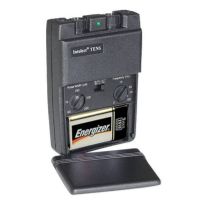 | Intelect TENS Basic Electrotherapy Unit View Product |
Electronic Muscle Stimulation (EMS) electrotherapy machines for home use transmit electrical impulses through electrodes targeting key muscle groups. They are used in physical therapy, rehab, and even fitness routines. The EMS electrical signals cause the muscles to repeatedly contract for set periods of time. An EMS electrical impulse is stronger than what a TENS device delivers, and is designed to build muscle rather than treat pain.
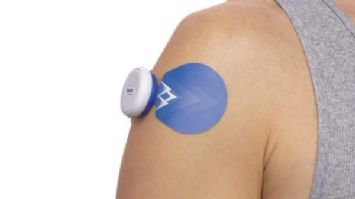 | SaeboStim One Wireless EMS Unit View Product |
For people who deal with chronic pain and are also recovering from a musculoskeletal injury, a combination electrotherapy machine can provide both TENS and EMS therapy in a clinical situation or from the convenience of home. These units deliver targeted electrical stimulation to decrease the transmission of nerve pain signals in TENS mode, while they support healing and muscle generation in EMS mode.
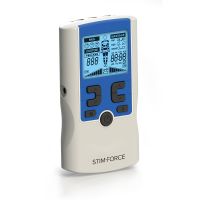 | TENS and EMS Combo Unit with Touch Screen View Product |
Studies have confirmed that using the combination of ultrasound and TENS has a more effective analgesic effect and reduces pain better than either of these treatments alone. Faster recovery times and a return to normal daily activities are noted with this dual therapy approach. However, these electrotherapy machines are pretty expensive and not generally relied on for home use.
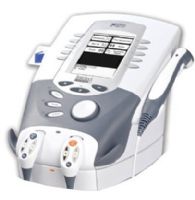 | Chattanooga Intelect Legend XT Combo System | Electrotherapy and Ultrasound System View Product |
Often used by professional clinicians including rehab therapists, chiropractors, and occupational therapists, clinical electrical stimulation (E-Stim) units offer multiple modes of therapy with different forms of energy transfer to meet a wide range of patient needs. The waveforms used in an E-Stim system perform differently and have varied rehabilitative attributes so a customized therapy plan can be developed. Commonly used to provide pain relief, these multimodal systems are also used in a clinical setting to address:
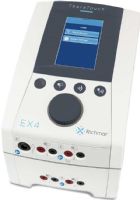 | TheraTouch EX4 Electrostimulation Machine View Product |
Portable E-Stim devices, like clinical systems, can offer a range of multiple therapy modes. Smaller and less powerful than a clinical system, but more robust (and complicated) than a wireless TENS machine, a portable E-Stim device is designed to stand up to heavy personal use at home.
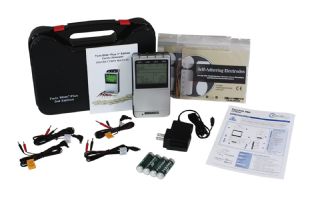 | Digital EMS, TENS, IF, and Russian Combo Unit View Product |
Absolutely! There are many options available within a wide price range. The most user-friendly (and budget-friendly) electrotherapy machine for home use is a TENS unit. Simple, easy to use, and affordable, these are very popular with people seeking relief from chronic pain. Portable E-Stim units are also appropriate for home use, although they are a bit more complicated and cost more than TENS units. Electrotherapy at home is more cost-effective than a never-ending list of prescription medications, especially when it’s priced out over a long period of time.
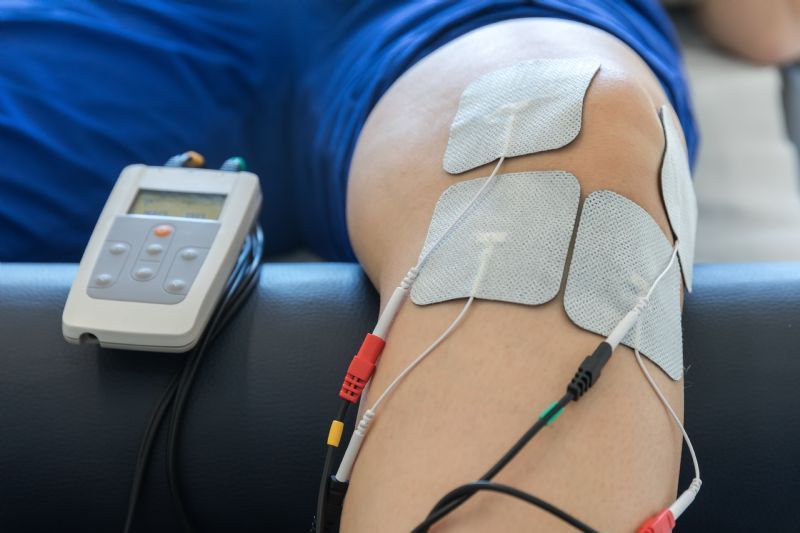
Products designed for personal home use are generally going to be less expensive than clinical versions, because the commercial equipment is designed to stand up to more intensive use by a large number of electrotherapy patients.
Beyond the difference in price between home and clinical equipment, there is a wide range of prices for each type of electrotherapy machine. For example, a wireless TENS device for personal use might cost around $30, while a portable E-Stim designed for home use can cost thousands of dollars. When you know what your budget is, you can narrow down your options in deciding what is the best electrotherapy machine for your needs.
When choosing the best electrotherapy machine for your situation, it’s important to determine what conditions you want to treat. For example, TENS units target nerve pain, while EMS targets muscles. Maybe you want to attend to both? Choose an electrotherapy machine that will be most effective in treating what is holding you back from enjoying your daily life
This refers to the size and weight of the machine, not the user. Ask yourself whether this will be used while seated or on the go, how portable you need it to be, and how you’ll move it if it needs to go from room to room or from house to house. This will help you decide the appropriate size and weight of the electrotherapy machine for you.
If portability is a big consideration, a wired battery-operated unit is ready to go along with you anywhere, but you need to have batteries on hand. They are less expensive than other versions. Wireless rechargeable electrotherapy machines are usually more expensive at first, but you don’t have to take on the cost and inconvenience of replacing batteries. Rechargeable units don’t have a long charge life and need to be recharged frequently. There are advantages and disadvantages to both, and the best choice is really the one that best fits your lifestyle.
Channels refer to the number of available outlets on the electrotherapy machine to connect to the lead wires. Typically, a single wire extending from the device includes two connections for electrodes. This means a single-channel device lets you use two electrodes at a time, while a dual channel allows you to use either two or four at a time. You should get a device with at least two channels. The number of lead wires can be important to ensure an entire area is treated, as a user’s back is larger than the area behind their knee, so the treatment area will determine how many channels are appropriate.
Some combination therapy units require a doctor’s prescription, but many units delivering effective treatment can be purchased for personal home use without a prescription.

People who have the following should not use an electrotherapy machine:
As one of the most common reasons adults seek medical care, chronic pain contributes to mobility issues and impaired ability to complete daily life activities, and has been linked to depression and dependence on pain medication. Whether seeking to block nerve pain or regenerate and heal tissues, electrotherapy has many benefits.
To see the full range of features and price points, visit our Electrotherapy page for more information, including product descriptions to help you compare models. Visit Caregiver University for helpful information including buying guides and product reviews for all your medical equipment needs.

Morgan Hopkins is a licensed doctor of physical therapy and freelance medical writer. She practiced clinically in outpatient orthopedics for 8+ years specializing in intramuscular dry needling, dance medicine, and post-operative care. Morgan seeks to be a leader in the continued shift toward preventative healthcare, helping people optimize movement now so they can move for years to come. She is a firm believer in complementary therapies, holistic wellness, and functional fitness and is thrilled to be able to educate others through Rehabmart’s platform.